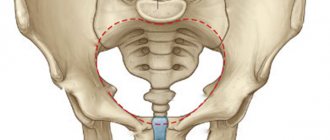Question: Can black stool be caused by iron supplements?
The site provides reference information for informational purposes only.
Diagnosis and treatment of diseases must be carried out under the supervision of a specialist. All drugs have contraindications. Consultation with a specialist is required! Could black stool be from iron supplements?
Yes, any iron supplements and even a number of products that contain this trace element in large quantities can cause stool to turn black. This is due to the fact that iron, during biochemical transformations, is oxidized to hemin or oxide, which has a black color. These iron compounds (oxide or hemin) remain in the intestinal lumen, moving towards the anus along with the feces. As a result, black iron compounds mix well with feces and also color them black.
Iron preparations not only color stool black, but also give it a specific odor. However, this is a variant of the physiological reactions of the body, so no additional interventions or discontinuation of iron supplements are required. After stopping the course of taking iron supplements, the stool will return to its normal color.
Other bowel problems
Constipation is not the only thing that worries a woman after childbirth. The color of the stool can help identify possible problems with the intestines.
Taking certain medications can cause black stool to turn black. In the last weeks of pregnancy and after childbirth, a woman is often prescribed iron-containing drugs to increase hemoglobin (Sorbifer, Heferol, etc.). The excrement turns black due to iron not being fully absorbed and is excreted from the body in this way. The group of such medications also includes: Activated carbon, Aspirin, Ibuprofen, and some Vitamin complexes. 5-7 days after stopping these medications, the color of the stool becomes normal.
In most cases, black stool is not a symptom of any complications. It’s just that some foods, especially when consumed in large quantities, turn it black. These include: beets, pomegranate, bananas, blueberries, blackcurrants, blackberries, licorice.
In some cases, black stool indicates dangerous diseases: stomach ulcers, gastritis, bleeding from hemorrhoids, varicose veins of the small pelvis. If, in addition to a change in the color of the stool, nausea or abdominal pain occurs, you should immediately consult a doctor.
Most often, black stool appears after consuming the described products or medications. Therefore, if you feel normal, then there is no point in running to the doctor.
Sometimes you have to deal with stools that are too light in color. The feces appear to be discolored. This may be due to the consumption of certain foods. For example, after eating rice, potatoes, tapioca. Also after taking medications or calcium supplements.
On the other hand, stool discoloration may indicate problems with the gastrointestinal tract. In this case, one may suspect that bile is difficult to enter the intestines. Then you should check the pancreas and exclude the possibility of developing pancreatitis or blockage of the bile ducts.
A complication after childbirth that does not pose a threat to a woman’s health, but brings great discomfort, is fecal incontinence. When you urge to go to the toilet, involuntary bowel movements occur due to weakening of the anal sphincter.
Insufficiency of the sphincter that closes the anus develops for a number of reasons:
- Perineal lacerations of the third degree of severity, which affect both the anus and, in some cases, the rectum. Healing of such a wound is difficult. Suppuration and divergence of the wound edges often occur.
- Compression of nerve endings during a long period of standing of the fetal head during labor.
Fecal incontinence is treated with conservative therapy or surgery. Electrical stimulation of the sphincter and pelvic floor muscles, physical therapy, and drug treatment are used. In advanced cases, which arise due to a rupture of the perineum, it is necessary to resort to surgical treatment. During the operation, the muscle tissue of the anal sphincter is restored.
Video: Exercises to stimulate bowel function
In conclusion, it should be mentioned that after childbirth, a woman should carefully monitor the nature of postpartum discharge, the consistency and color of stool. This is an indicator of the proper functioning of the internal systems of the body. In case of any changes, you should consult a doctor.
For humans, stool that is dark brown to yellow-brown in color is considered normal. Although the normal color for each will be an individual indicator. But why can black feces be detected after childbirth? What are the main reasons for this phenomenon, and how to deal with it?
How is it formed and what does it consist of?
From the stomach, food masses enter the duodenum, where they are mixed with bile produced by the liver and digestive enzymes of the pancreas. During the digestion of proteins, fats and carbohydrates, a suspension is formed that moves through the small intestine. The small intestine absorbs nutrients into the blood, and the remaining liquid waste enters the large intestine. In the large intestine, the remaining water is absorbed and feces are formed, which are excreted into the environment through the distal part of the digestive tract - the rectum.
Normal stool consists of water, remains of animal food, undigested plant fibers, bacteria (up to 1/3 of the dry weight of stool), bile, and dead cells of the mucous membrane lining the digestive tract. The composition, consistency, quantity and color of feces depend on many factors and are one of the indicators of the health of the body in general and the gastrointestinal tract in particular.
Diagnostic measures
In most cases, the diagnosis, if one is not available, cannot be made by stool color alone.
The patient and doctor need to consider other symptoms, past medical history, dietary changes, and medications to decide what is causing the change in stool color. Physical examination will be important in determining the significance of these types of symptoms.
Feces may be examined for blood, fat, or infection. Blood tests are needed depending on the clinical situation (color changes may require evaluation of the pancreas, liver, or gastrointestinal tract).
Normal stool color
Stools are usually brown in color, and significant changes in color may be a cause for health concern. The color of stool is determined by the presence of bilirubin (a breakdown product of hemoglobin) and other bile pigments. Changes in the amount of bilirubin in the bile can change the color of the stool from light yellow to dark brown.
In most cases, changes in the color of stool are associated with dietary habits and are not a symptom of any health abnormalities. However, in some cases, for example, if the color of the stool has changed radically, and these changes persist for a long time, this can be an important diagnostic sign of dangerous diseases and serious life-threatening conditions.
When should a change in color alert you?
A cause for concern should be those cases when a change in stool color is accompanied by other symptoms:
- Green and foul-smelling stools are accompanied by diarrhea, abdominal pain, high fever, nausea and vomiting - possible symptoms of some infectious diseases, such as salmonellosis.
- Discolored feces are accompanied by pain in the abdomen, back, yellowness of the sclera and skin, darkening of the urine - signs of problems with the liver and biliary tract.
- Stool staining black is accompanied by abdominal pain, weakness, pale skin, increased heart rate, cold sweat - symptoms of bleeding in the stomach or duodenum.
- Red stool is accompanied by abdominal pain, nausea and vomiting - these may be signs of intestinal bleeding.
What diseases cause black feces?
You should start sounding the alarm when black stool occurs in a combination of the following symptoms:
- Nausea, vomiting, vomit with;
- Fever, high or low blood pressure;
- Dizziness and numbness of the limbs;
- Intoxication of the body after alcohol.
The combination of these signs may indicate serious illness and means immediate medical attention.
| Disease | Description | Symptoms |
| (colitis). | An inflammatory disease of the gastrointestinal tract, affecting all its parts, characterized by the formation of ulcers and wounds on the intestinal walls. | General malaise, fever, diarrhea, liquid stool mixed with blood. |
| Peptic ulcer disease. | A chronic process in the upper parts of the digestive tract, frequent localization is the stomach, duodenum. The latter occurs more often in adult men and is aggravated by alcoholism and smoking. | Pain that occurs on an empty stomach, goes away after eating, heartburn. |
| For complications: vomiting “coffee grounds”, tarry black loose stools, anemia, tachycardia, | ||
| Gastrointestinal bleeding. | The source of bleeding can be a pathological process of any nature, localized from the esophagus to the rectum. | Pale skin, decreased blood pressure, discharge of unchanged or altered blood through vomiting or feces. The more massive the bleeding, the earlier melena appears - black, tarry stool. |
| Leukemia | Acute diseases of the blood system affecting the bone marrow. | Joint pain, bruising of the skin after minor injuries, and in severe cases, gastrointestinal bleeding occurs. |
Video:
Frequent reasons for the appearance of black stool in an adult are factors such as eating coloring foods (prunes, grapes, beets), taking medications and bleeding in the gastrointestinal tract. Often, changes in the color, smell and consistency of feces can provoke serious diseases: stomach ulcers, tumor processes, helminthiasis and deep mycosis. Dark coloring of stool for no apparent reason is a serious reason to seek medical help.
Green stool is a sign of what?
As already mentioned, the brown color of stool is due to the presence of bilirubin in it. Bilirubin enters the lumen of the duodenum with bile, the color of which, depending on the concentration of this substance, can vary from greenish-yellow to dark brown. As it passes through the intestines, the chemical composition of bile changes and it darkens. If the movement of feces through the intestinal lumen becomes too fast, the bile retains its original color and the stool becomes green. This can happen with diarrhea caused by food poisoning, salmonellosis, rotavirus infection, giardiasis, Crohn's disease, autoimmune and endocrine diseases.
Green stool may occur if you eat a lot of green vegetables.
Green feces in an adult may be due to intestinal dysbiosis. In this case, a detailed scatological examination for dysbiosis will help establish the diagnosis.
Green stools, accompanied by cutting pain in the abdomen, diarrhea, and an admixture of mucus and pus in the stool are signs of acute infectious enterocolitis. Treatment in this case is prescribed by an infectious disease doctor based on the results of a bacteriological examination of stool and establishing the sensitivity of pathogenic microflora to a particular group of antibacterial drugs. In addition to antibacterial treatment, enterocolitis requires replenishment of fluid losses, including parenteral administration of electrolyte solutions.
Green stool may also have a completely normal explanation that is not related to illness, for example, after eating a large amount of green leafy vegetables (especially spinach), foods with appropriate food colorings, or some dietary supplements. Sometimes a change in color is provoked by taking iron supplements, but most often the stool in this case does not turn green, but turns black.
Green stool in children can be caused by the same diseases as in adults. In newborns in the first days of life, green stool is a normal variant called meconium.
How to deal with constipation
The goal of therapy in the treatment of constipation is to stimulate the intestines and avoid hardening of the stool.
Nutrition for constipation:
- Increase the consumption of raw vegetables: carrots, cabbage, celery, radishes, turnips. Coarse fiber from raw vegetables, passing through the intestines, stimulates its peristalsis. Eating vegetables raw ensures regular bowel movements.
- Eat foods that have a laxative effect on the intestines: beets, prunes, dried apricots, kefir.
- Reduce the consumption of mucus-forming foods: baked goods, pasta, semolina, rice.
- Drink enough fluids throughout the day. Sufficient means drinking as you wish. Do not forcefully drink water. Thirst is the main indicator that the body needs water for digestion.
- Drink a glass of hot water with lemon on an empty stomach. This starts digestion and alkalizes the body.
Physical activity for constipation:
- Any physical activity helps stimulate digestion. Running, cycling and even walking with a stroller are good ways to improve bowel function.
- A set of exercises that promote intestinal motility: - In a lying position, pull your right leg to your chest. Fix the position for 1-2 minutes. Repeat 2 times. Repeat the exercise with your left leg. — Perform bicycle exercises. — Abdominal exercises strengthen the abdominal muscles and stimulate intestinal motility.
What does black stool mean?
Feces can turn black in a completely healthy person in the following cases:
- When eating blueberries, prunes, pomegranates, black currants, bird cherry, red wine, red beets.
- After eating dishes and products based on or containing blood, for example, rare meat, blood sausage, etc.
- While taking iron supplements for the treatment of iron deficiency anemia, bismuth supplements, multivitamins, activated carbon.
In these cases, the help of doctors is not required, and the color of the stool returns to normal within a few days after changing the menu and stopping treatment.
Black stool is a symptom of dangerous bleeding in the upper gastrointestinal tract
The sudden and inexplicable appearance of black stool (melena) is one of the serious symptoms of internal bleeding into the cavity of the stomach or duodenum. The black color is due to the interaction of hemoglobin in the blood with hydrochloric acid in the gastric juice, resulting in the formation of black hemin. Bleeding can be caused by a peptic ulcer, tumor, injury, bleeding disorder, varicose veins of the esophagus due to liver disease, infectious process and other reasons.
If the appearance of melena is accompanied by weakness, cold sweat, increased breathing and pulse, and pale skin, you should immediately call an ambulance, since massive blood loss poses a serious threat to life.
Stool may turn black when blood is ingested during severe nosebleeds, after tooth extraction, or after oral trauma.
Black feces during pregnancy can be a consequence of all of the above conditions, but most often it is caused by a woman taking multivitamins and supplements containing iron.
What kind of stool should you have after childbirth?
Good afternoon, young mothers. Many women experience bowel dysfunction after childbirth. What kind of stool should you have after childbirth? Problems with stool are a natural phenomenon that is caused by the peculiarities of pregnancy and childbirth.
Not everyone is ready to discuss such delicate problems, so in this article we will consider what kind of stool should be after childbirth, what deviations there are and how to restore the norm.
First week after natural birth
As a rule, before giving birth, a woman either gives herself an enema, or it is done by medical workers at the preparation stage. Therefore, before giving birth, a woman’s intestines are emptied. After childbirth, as a rule, there will be stool on the 2-3rd day.
If this does not happen, you should consult a doctor. In this case, dietary adjustments, an enema or some laxatives may be necessary.
In the first postpartum week, you should not expect a quick recovery and normalization of stool. Therefore, it is important to take all measures to speed up this process. Very often at this time, women suffer from constipation, diarrhea or any other disorders associated with bowel movements.
The fact is that during childbirth, the intestines were compressed by the enlarged uterus in which the child was developing; after the birth of the child, you need to give your body some time to return to its original state.
Also, very often, if there are tears or sutures after an episiotomy, spastic constipation may occur due to spasms of the smooth muscles of the intestine. Some women suffer from psychological constipation, due to nervous tension and fear that it will be painful during defecation, or postpartum sutures will come apart.
But, in practice, this is impossible - defecation cannot cause the sutures to rupture, but if you experience pain, you will have to endure it.
First week after cesarean section
The recovery process after a cesarean section is slightly different. Despite the fact that the operation is not complicated and in 95% of cases proceeds without complications, it is still a surgical intervention using anesthesia, with increased blood loss and disruption of the integrity of tissues and organs. Therefore, the process of restoring bowel function is also slightly different.
It is worth noting that the vast majority of women who have undergone a caesarean section without complications are back on their feet within 6-8 hours. But, in some cases, things don't happen so quickly. It depends on many factors. The first bowel movements, as with natural childbirth, can be painful.
If complications occurred or antibiotics were prescribed for prophylactic purposes, green stools after childbirth are a consequence of dysbacteriosis. But this is not the most unpleasant thing. The fact is that after any operation, due to the specific effects of anesthetic drugs on the nervous system and muscles of a person, so-called atonic constipation may develop.
This problem is somewhat more difficult to deal with than constipation that occurs in the case of natural childbirth. That is why, immediately after the operation, the anesthesiologist prescribes certain medications to the woman in order to restore bowel function.
If you do not have any serious diseases of the gastrointestinal tract, and if you scrupulously followed all the recommendations of the anesthesiologist, you will be able to go to the toilet within 2-3 days.
If you are unable to empty your bowels within 2-3 days after a cesarean section, it is recommended to do an enema, since atonic constipation is accompanied by bloating, increased gas formation, pain and cramps in the abdomen, which prevents normal scarring of the postoperative wound.
Life after childbirth
What should stool look like after childbirth?
In fact, there is no universal answer to this question, and there cannot be one. What kind of stool should be after childbirth is determined by many factors, from diet to the individual characteristics of the female body.
Therefore, you should not worry about the color, consistency or amount of stool after childbirth. Considering the fact that in the postpartum period, intestinal function is only being restored, you need to be prepared for the fact that any problems with stool may arise.
But, in some cases, a change in stool color or consistency may be a warning sign. Let's look at several common problems that new mothers face during the postpartum period.
- Yellow and watery stools after childbirth are a fairly common occurrence. Why is my stool yellow after childbirth? may indicate that the digestion process is not proceeding fully. This is normal for the first 2 weeks after birth while the body is recovering. Also, yellow stools may appear if you consume large amounts of dairy and fermented milk products. This is fine.
- Too loose and frequent stools after childbirth indicate that a woman has diarrhea - this can lead to dehydration and loss of valuable microelements, which will result in a loss of strength. Diarrhea after childbirth needs to be treated urgently - consult your doctor about your condition. If the problem is caused by an intestinal infection, you may pose a risk to your baby. Children who have just been born are very susceptible to any pathogens, so take care of their hygiene. Also, with diarrhea, it is necessary to constantly replenish the body's fluid supply to avoid dehydration. To do this, be sure to drink a lot of water, because in severe cases you will have to drip saline solution.
- Constipation after childbirth is the most common bowel problem during the postpartum period. To solve it, first of all it is necessary to determine the reason, based on which, and choose a method of elimination. There can be many reasons - disruption of the natural microflora, spasms, psychological nuances, problems in the diet, anesthesia, or even exacerbation of chronic diseases.
- Black stool is in most cases not an alarming symptom, since many women in the third trimester take medications with a high iron content, which are necessary to prevent fetal hypoxia. Therefore, black stools after childbirth may simply be a consequence of taking iron supplements. The excrement contains remnants of iron that has not been absorbed by the body, which have entered into complex compounds with trace elements from the body. There is nothing wrong with this, and within a few days after stopping the medication, the color of the stool returns to normal. In some cases, the reason why black stools after childbirth may also be food rich in iron or intake of activated charcoal. But, in some cases, black stool indicates that bleeding has opened in the intestines - then pain, nausea and weakness will be added to everything. In this case, you need to urgently seek help from a doctor.
- Green stool after childbirth may indicate that the body's digestion process is disrupted. The acid-base balance of the intestines, as well as its natural microflora, were disrupted during the process of prenatal preparation, as a result of an enema, which causes the stool to turn greenish. But green stool can also result from the use of antibiotics or antifungals during the postpartum period. There is nothing wrong with this - the body will recover after taking a course of bifidobacteria and prebiotics. The drugs must be chosen by a doctor!
In all cases, you should consult your doctor regarding your bowel problems. If black stool appears after childbirth due to internal bleeding, urgent surgery may be necessary. For most women, stool returns within the first month after childbirth.
But, this is only possible if you have a normal diet and nutrition regimen, as well as if you follow all the doctor’s instructions.
We found out what kind of stool should be after childbirth, we wish you and your baby health!
Watch video tips about constipation after childbirth.
Red stool – is it a reason to worry?
Red stool appears when there is bleeding into the intestinal cavity.
There is no reason to worry if the day before you ate beetroot dishes or consumed drinks and confectionery products colored with red food coloring.
Among pathological conditions, the most common cause of red stool is bleeding from hemorrhoids. More dangerous causes of bleeding into the intestinal cavity and redness of the stool are Crohn's disease, ulcerative colitis, intestinal diverticulosis, malignant tumors, and arteriovenous malformations.
Is it dangerous when stool is white?
White feces are one of the characteristic symptoms of liver and biliary tract diseases. Discoloration of the stool is explained by the lack of bilirubin in it, which ceases to be supplied with bile as a result of impaired liver function or obstruction of the bile ducts. But there is a lot of it in the blood, and this can be seen with the naked eye, since it turns the skin and eyes yellow - this condition is called jaundice. In addition, bilirubin begins to be excreted intensively by the kidneys, as a result the urine becomes dark, as doctors say, the color of beer. Undoubtedly, this is a dangerous condition that requires immediate specialist intervention and proper treatment.
Yellow or white stool is a sign of liver and pancreas disease
Light and loose stools with an unpleasant odor are a sign of impaired pancreatic function. The deficiency or absence of a number of enzymes makes it impossible to digest fats, resulting in light-colored stools. Lightening of the stool after eating a fatty meal may indicate chronic pancreatitis, celiac disease, cystic fibrosis, pancreatic cancer, gallbladder cancer, compression of the biliary tract or blockage due to cholelithiasis. The consequences of these diseases can be very serious, so you should not delay visiting a doctor.
White feces can also appear normally, for example, with errors in nutrition, in particular, with the abuse of fatty foods: lard, butter, fatty sour cream, etc.
Another variant of the norm is stool discoloration while taking certain medications: antibiotics, antifungals, gout medications, anti-inflammatory drugs, oral contraceptives. A few days after completing the course of treatment with such drugs, the color of the stool returns to normal. To avoid unnecessary worries, before taking medications, you should carefully read the instructions for the drug, especially the section on side effects and symptoms of overdose.
What if the stool turns yellow?
Yellow stool is one of the variants of light-colored stool, so the reasons for its appearance may be the same: diseases of the liver, biliary tract, pancreatic diseases, conditions accompanied by blockage or compression of the bile ducts, excessive consumption of fatty foods, treatment with certain medications.
Metabolic processes occur every second in the human body. The product of digestion is excreted in the form of urine and feces. Certain foods can stain biomass, sometimes giving it a black tint. Feces are the result of the processing of elements that enter the body, and a person’s health can be assessed by its external signs. Such a reaction is usually called “melena” or “chernukha,” and this failure is considered one of the dangerous signals sent by the body. Today we will discuss why black stool occurs when taking iron.
Why does stool change color?
Feces may be dark in color if you take medications that contain bismuth and foods that have the ability to change the color of stool at the same time. You should analyze your diet over the past few days to remove suspicious foods from your diet. If the color of the stool does not change, you will have to consult a doctor.
Black biomass can appear after consuming foods with a high iron content - beets, blueberries, etc. You may have taken activated carbon, vitamins, De-nol. In any case, you should keep track of the following:
- duration of appearance of dark-colored stool;
- the appearance of other symptoms of the disease.
Side effects from taking De-nol
It is worth noting that de-nol, like any other drug, can have side effects. Some of them are completely harmless to humans, for example, darkening of the stool or tongue. And there are those that cause a lot of discomfort to the patient, for example, vomiting, nausea, dizziness
You need to know that if you suspect any disease, you need to consult a doctor to have an examination and make sure that everything is in order. And if this is an alarming signal, then timely diagnosis will help prevent the disease from developing.
What foods contain iron?
A dark-colored biological mass occurs after eating certain foods:
- plant origin - currants, tomatoes, beets, grapes, red wine, bananas, blueberries;
- meat products - containing blood, livers, blood cells.
There are known cases when the feces turned black after strong drinks - tea or coffee, drunk in large quantities.
Feces turn dark after high-calorie foods, prunes and even pomegranates. Some freshly squeezed vegetable or fruit juices will also impart black tones to the stool.
Taking iron-containing medications
Black stools may occur when taking medications containing iron. It should be noted that there are a sufficient number of such funds. As a rule, such a condition does not conceal anything dangerous, and the doctor prescribing the therapeutic course warns of possible changes.
Changes in the color of the biological mass can be caused by regular use of the following medications:
- drugs for anemia;
- certain vitamins;
- activated carbon;
- medicines for the digestive system, which contain bismuth.
Additional therapy in such cases is not required, since feces that have changed their color when taking iron become normal a couple of days after the end of the treatment course.
But if your changes are caused by taking non-steroidal or narcotic compounds, anticoagulants, then the help of a specialist will come in handy.
It should be noted that medicinal compositions on their own do not provoke a change in the color of feces, but they are quite capable of damaging the mucous membrane, increasing the risk of internal bleeding. If the patient experiences such a pathological condition, then he begins to be bothered by pain or a burning sensation in the stomach, vomiting, and loss of performance.
If such symptoms are noticed, then black feces can become a danger signal not only for the child, but also for the adult.
When to sound the alarm?
If the appearance of black feces is accompanied by a variety of unpleasant symptoms, then there is indeed a reason to visit the clinic. You should be alarmed by an increase in body temperature, cold sweat, pain in the abdomen and during bowel movements, the presence of diarrhea, as well as vomiting and nausea.
Pathological changes in well-being may indicate not only the opening of internal bleeding, but also the presence in the body of such ailments as gastritis, ulcerative colitis, anemia, Crohn's disease, intestinal infection, helminthiasis, histoplasmosis, hookworm disease, duodenogastric reflux and many others.
We can come to the conclusion that blackening of stool after childbirth, which is not accompanied by a deterioration in general health, is considered normal and is not a reason for panic. Therefore, you need to first look for the cause in your diet and taking various medications, and only after that make an appointment with a specialist.
beremennost.net
Black feces in expectant mothers when taking iron
For pregnant women, for normal fetal development, doctors often recommend multivitamin formulations containing iron, after taking which the feces become black. This condition is completely normal and does not require treatment. Experts assure that this is how the expectant mother’s body gets rid of excess iron and recommend not interrupting the intake of vitamins. But if a pregnant woman passes black stool not from taking products containing iron, then she will have to urgently donate blood for a general and biochemical analysis.
If a woman suffers from an ulcer, she is prescribed a stool test to detect occult blood. Loose, dark-colored stools, accompanied by signs of collapse, pallor and cold sweat, indicate an urgent need to see a specialist.
Dark color of stool when a pregnant woman takes iron may be a sign of a dangerous disease that will require urgent treatment.
Bleeding and feces
It's no secret that black feces may indicate the presence of internal. If you start an ulcer, then in fact you cannot do without this symptom. So maybe black feces during treatment with de-nol have nothing to do with health procedures, but simply indicate the presence of a complication.
But, however, with bleeding, black stool is not the only symptom of the pathology; in addition to it, dark-colored vomit appears, reminiscent of coffee grounds. Also, the patient’s stool becomes liquid in consistency and resembles diarrhea.
Important! Even if the bleeding has passed, the dark stool may persist for several more days!
Sometimes a symptom of internal bleeding can be bloody stool. Many people worry whether they will be able to distinguish staining stool from streaks of blood. In fact, it is very difficult to confuse this, and therefore the worries are not justified.
Black stool from vitamins containing iron
Many people ask whether the color of stool changes when taking vitamin complexes containing iron. Sometimes it happens. This is explained by the fact that most formulations contain not only vitamins, but also mineral supplements, one of which is iron. Once in the stomach, under the influence of hydrochloric acid it will oxidize, pass through the intestinal tract, mix with feces, giving it a black tint. In addition, the metal will cause a special smell of biological masses, and in some cases cause constipation.
Some doctors claim that when taking vitamins, the stool turns black due to excess iron that is not absorbed by the esophagus.
It is believed that vitamins can give a black color to the stool of both children and adults. In this case, the change will be of a physiological nature, which is provided by the manufacturer of the complex and is reflected in the accompanying instructions.
If you find black feces while taking vitamins and are absolutely sure that this is the reason, you should not worry and stop the course. For children, it is recommended to make sure that they do not eat delicious vitamins without your supervision, otherwise the daily dose of iron for them will be increased significantly.
When prescribed to infants
For a woman carrying a child, a lack of iron in the body can be dangerous. The fact is that it is its molecules that transport all nutritional components. And no matter what nutrition is prescribed, the baby’s body will not absorb the necessary substances.
An infant may be prescribed Maltofer in the following cases:
- with anemia;
- during artificial feeding;
- premature or dystrophic children;
- if you gain weight slowly.
The duration of the appointment is prescribed by the doctor. In the case of a premature baby, the duration can be up to five months.











